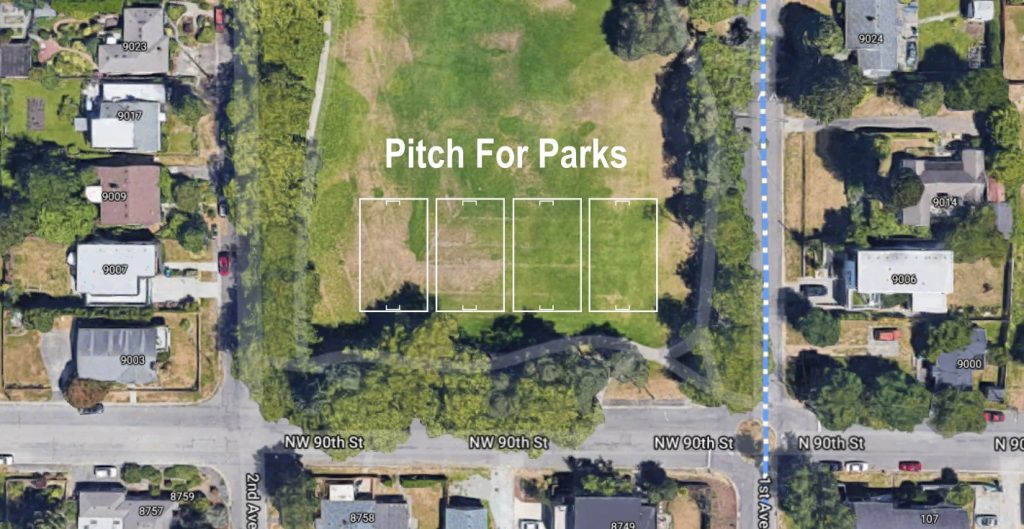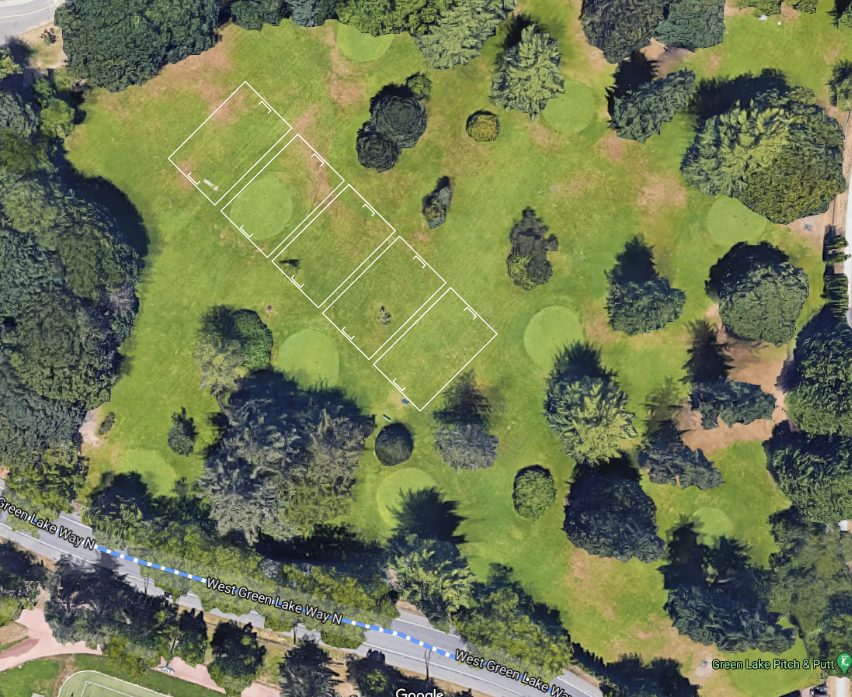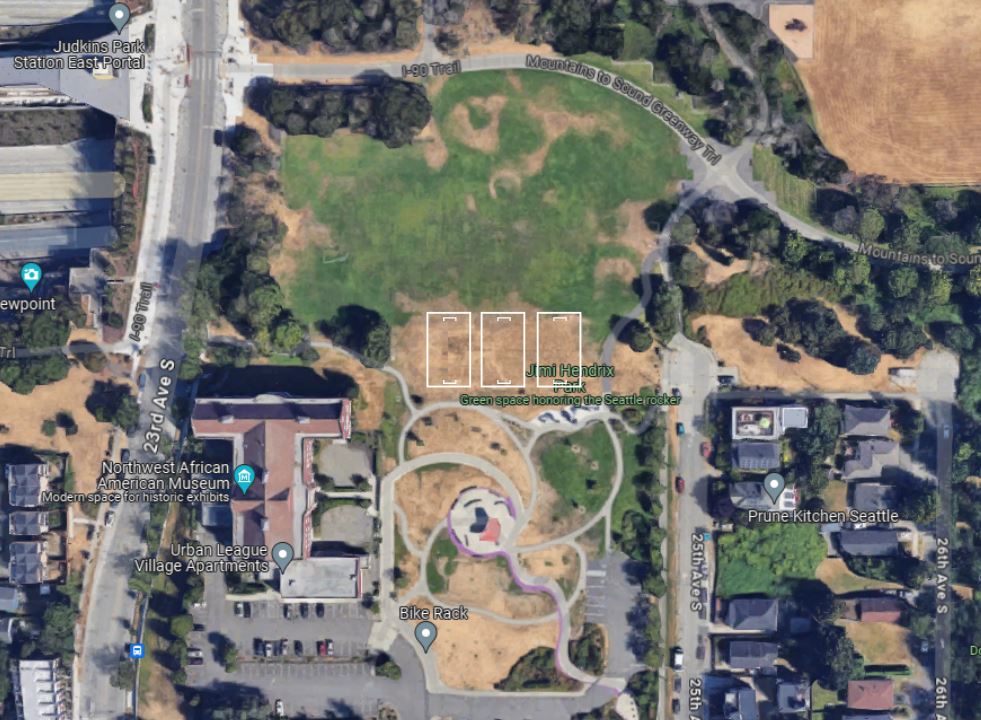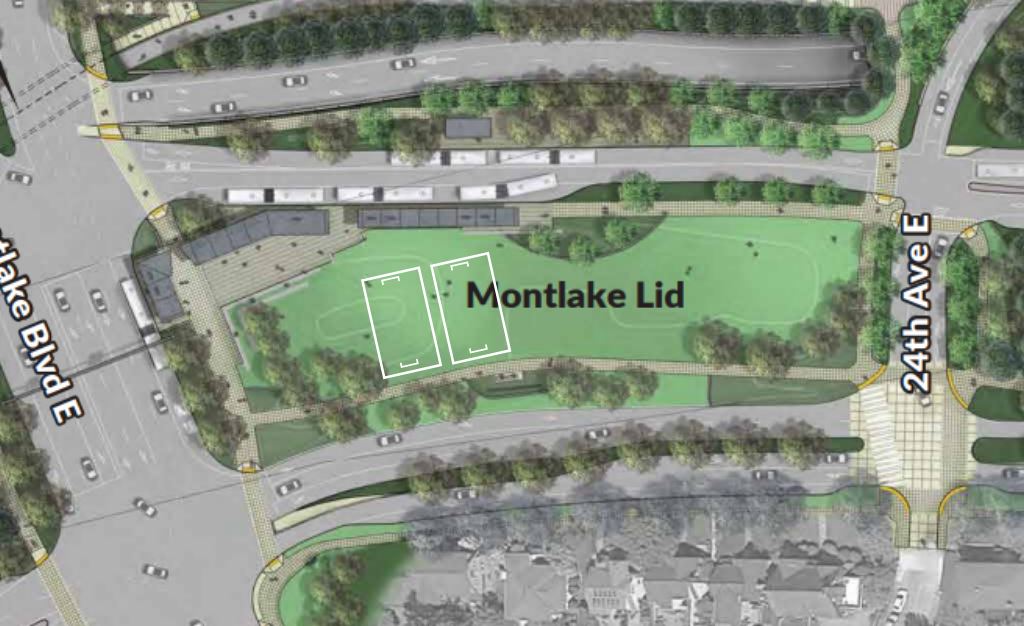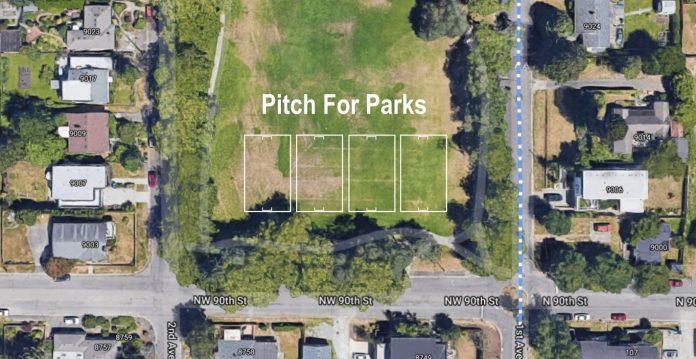
Puget Sound parks too often go underused, but adding more sports fields is a quick fix.
A few years ago, I decided to mix things up and took my kids on the bus to Yesler Terrace Park. With spectacular views, streetcars rolling by, and a lot of great urbanism, I found it to be an incredible addition to our park rotation. It has a whimsical playground with slides, hills to sled down, a sweet merry-go-round, and a great coffee shop nearby to help me wake up that morning.
But the best thing about Yesler Terrace Park? The mini soccer pitch.
There were people of all ages, backgrounds, and skill level waiting their turn to get on the pitch. The smaller scale allowed full games to go on even with just a handful of players. It was so captivating to watch with the ball movement, tricks, and quick action. There was a sense of community, comradery, and activity around this nucleus of the park.
The skill and one-on-ones reminded me of the classic Nike soccer commercial featuring legends of the game competing in a sudden death three-on-three tournament. Small fields not only take up less space, they allow more games to spring up when you only have two or three aside, and the number of touches on the ball gives people more time to develop their skills and show off their abilities.
Soccer brings communities together
The pitch is part of the RAVE Foundation, a Sounders-affiliated charity that built the mini pitch in the community. It was designed knowing that soccer — or football (depending on where you’re from) — is an international language that brings global communities together. People of all ages, genders, ethnicities, and skill levels play. The demographics of Yesler Terrace feature people from all backgrounds, origins, economic statuses. The pitch is part of their sense of community.
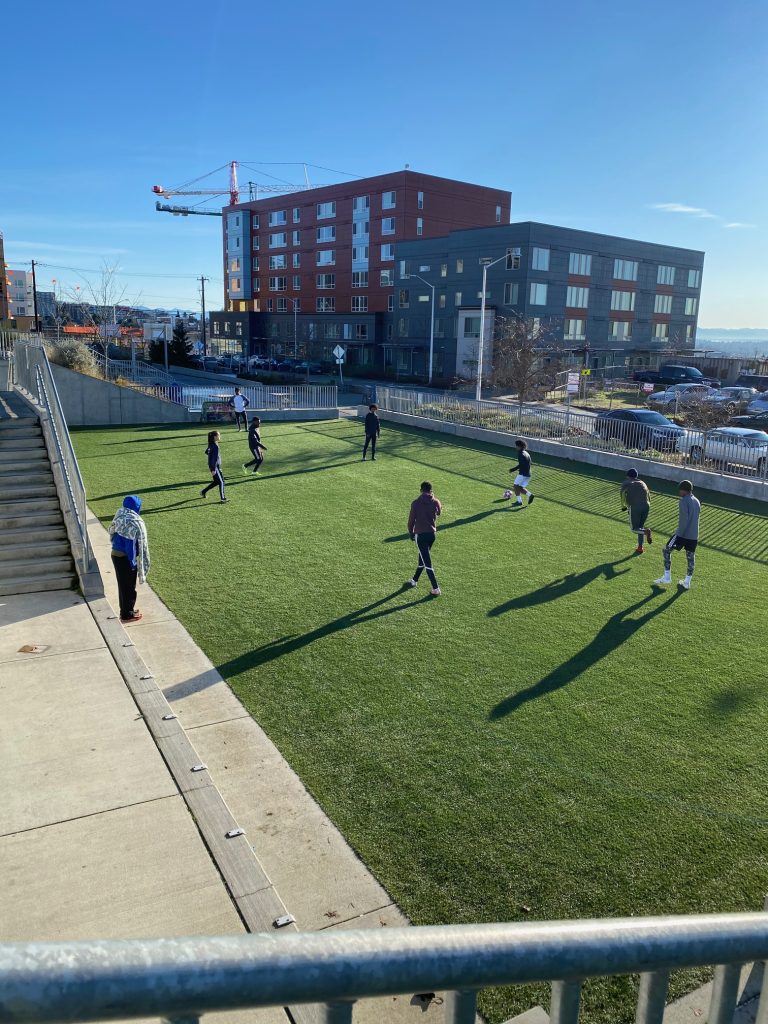
When Belgium welcomed international migration, planners located soccer pitches centered around parks and housing to help immigrants assimilate. This was to make newcomers feel comfortable, welcomed, and meet each other no matter if you spoke French, Flemish, Italian, or Arabic. Everyone speaks the same language when the ball is at your feet. This led to Belgium’s golden generation — children of immigrants from Africa, the Middle East, South America, and elsewhere in Europe — bringing the Belgians to greater heights than ever achieved in the global game. They currently sit fourth in FIFA’s world rankings.
Seattle parks needs more active uses
Seattle doesn’t really design parks for activity, it designs them for open space and silence. This isn’t a knock on peaceful serenity parks provide in an urban setting. But let’s be flat honest with ourselves. A park is supposed to be full and active; open space is supposed to be quiet and empty. And most of our parks are too quiet and too inactive.
Lake Union Park should be the center of activity and action for the city’s dense downtown neighborhoods. But it’s mostly filled with vast gravel pathways, small trees, and geese walking around relieving themselves. Sure, this is serene to some, but a little bit of space can go a long way to fill it with people and activity.
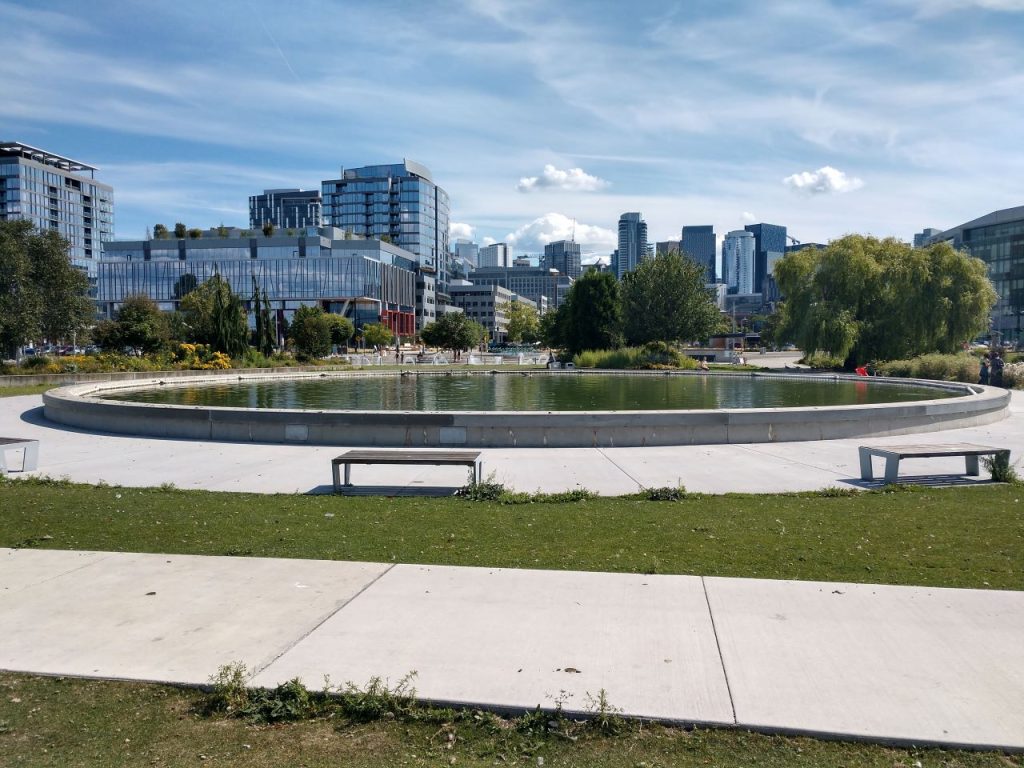
We don’t see parks as a center of activity here in Seattle. We design them as large open lawns where someone can walk among the birds chirping or stroll through a meadow with their dog. We need more spaces for people, not dogs and birds, to play downtown.
But perhaps park planners are simply responding to the feedback they receive. Pickleball courts are being protested in West Seattle, and people don’t want to touch our golf courses near light rail. Try turning a public golf course into a park and people make heartfelt excuses that they are a part of nature and bird migration patterns and simply cannot be turned into a public space that has no financial burden to experience.
Heck, we don’t even allow vendors into our parks. This is because Seattle parks are designed to be lowly attended, to only sit quietly and gaze at a tree, but what they really should be are community plazas of recreation, commerce, and activity.
We can make parks vibrant, and it won’t take up much space
Imagine if RAVE Sports built mini soccer pitches in Lake Union Park. We may see a soccer match pickup during lunch or on a nice weekend. And it doesn’t need to be limited to soccer. We could put up basketball courts, pickleball courts, tennis courts, a playground, you name it, and this park would suddenly come to life. On a warm summer day, you would see more people on Lake Union’s waterfront than you would at Golden Gardens or Alki Beach. This can also reactivate Downtown Seattle and already have activated Pier 62, with more waterfront improvements on the way.
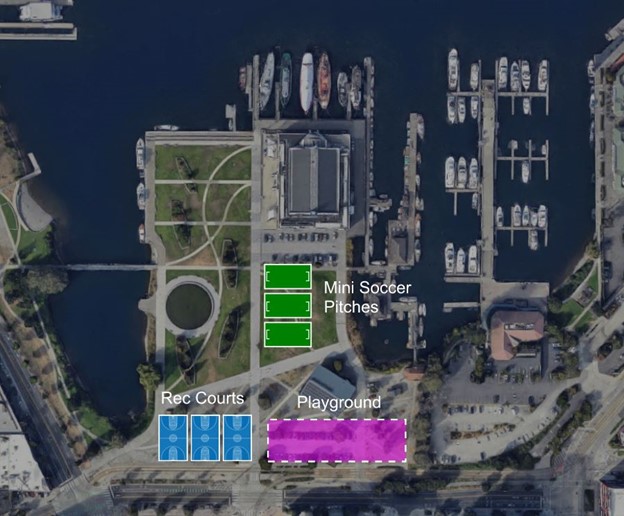
With people at the park there is now a reason for venders to show up and sell ice cream, sandwiches, gyros, tacos, and spring rolls. There’s a reason for a farmers’ market to pop up, and not just because it was scheduled. Maybe someone will set up a small band to entertain the patrons. Parks bring out activity, life, and a sense of community through gathering. Open space is for a hike, a view, and a book; Seattle has plenty of those kinds of parks.
With more park acres per capita than Manhattan, surely we have the space for recreation. What our parks need are places for activity and celebrate our city’s diversity and cosmopolitan aspirations, and what better way to do that than a soccer pitch.
Seattle needs a pitch for every park
After returning to our local favorite, Sandel Park in Greenwood, I realized the concentration of activity was entirely on the playground and basketball court, not the acres of open lawn. Children’s soccer leagues will set up briefly in the lawn, and kids chase the ball on a small, coned off field playing three-on-three or four-on-four matches learning the game and practicing skills.
The problem is these fields are temporary and full of bumps and mud. Something tells me a RAVE Foundation field (or four) would work wonderfully here. The Yesler Terrace Park pitch is flat, turfed with fake grass, and drains. Five minutes after it rains — or even if it’s raining at the time — the field works out wonderfully for a match, ensuring the pitch is used year-round.
All our parks could easily fit several of these mini soccer pitches. These fields would be some of the most active spaces in every neighborhood. They would be used by youth leagues learning the game, and, after practice is over, become a hub of community activity with pickup games springing up at all different times.
Most major talents in the game were discovered on community pitches. Players in Brazil, Argentina, and Belgium didn’t come out of some expensive travel soccer team, they were discovered in their community’s backyard. Lionel Messi honed his skills on a community pitch in Rosario when he was discovered. Argentina hoisted the World Cup trophy last year solidifying Messi’s status as the greatest to ever play the game.
RAVE is on their way to build 26 community fields around the Seattle metro in time for the 2026 World Cup. With six matches scheduled for Seattle, just imagine if the city built many of these in city parks with hopes to grow the game. As the tournament gets closer and local interest grows, the game’s next American soccer star could be inspired to run out and play and be discovered in one of our parks. It would be a dream come true if Seattle’s parks became the plazas of our communities, a center of activity, gathering, and commerce. That’s a pitch I think we can all get behind.
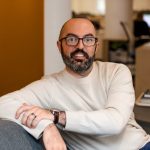
Ryan DiRaimo
Ryan DiRaimo is a resident of the Aurora Licton-Springs Urban Village and Northwest Design Review Board member. He works in architecture and seeks to leave a positive urban impact on Seattle and the surrounding metro. He advocates for more housing, safer streets, and mass transit infrastructure and hopes to see a city someday that is less reliant on the car.


